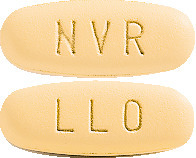SUMMARY CMI
Galvumet®
Consumer Medicine Information (CMI) summary
The full CMI on the next page has more details. If you are worried about using this medicine, speak to your doctor or pharmacist.
1. Why am I using Galvumet?
Galvumet contains two active ingredients Vildagliptin and Metformin hydrochloride. Galvumet is used to treat patients with type 2 diabetes mellitus.
For more information, see Section 1. Why am I using Galvumet? in the full CMI.
2. What should I know before I use Galvumet?
Do not use if you have ever had an allergic reaction to Galvumet or any of the ingredients listed at the end of the CMI.
Talk to your doctor if you have any other medical conditions, take any other medicines, or are pregnant or plan to become pregnant or are breastfeeding.
For more information, see Section 2. What should I know before I use Galvumet? in the full CMI.
3. What if I am taking other medicines?
Some medicines may interfere with Galvumet and affect how it works.
A list of these medicines is in Section 3. What if I am taking other medicines? in the full CMI.
4. How do I use Galvumet?
- Take 1 tablet twice a day with food as prescribed by your doctor
- Swallow the Galvumet tablet whole orally with water
More instructions can be found in Section 4. How do I use Galvumet? in the full CMI.
5. What should I know while using Galvumet?
| Things you should do |
|
| Things you should not do |
|
| Driving or using machines |
|
| Drinking alcohol |
|
| Looking after your medicine |
|
For more information, see Section 5. What should I know while using Galvumet? in the full CMI.
6. Are there any side effects?
Common side effects include unusual weakness, feeling sick, low blood sugar level symptoms like sweating, weakness, dizziness, unintentional shaking movements in one or more parts of the body, itchy rash, blisters, lactic acidosis symptoms such as fast and deep breathing, muscle cramps and body aches.
For more information, including what to do if you have any side effects, see Section 6. Are there any side effects? in the full CMI.
FULL CMI
Galvumet®
Active ingredient(s): [vildagliptin/metformin hydrochloride]
Consumer Medicine Information (CMI)
This leaflet provides important information about using Galvumet. You should also speak to your doctor or pharmacist if you would like further information or if you have any concerns or questions about using Galvumet.
Where to find information in this leaflet:
1. Why am I using Galvumet?
2. What should I know before I use Galvumet?
3. What if I am taking other medicines?
4. How do I use Galvumet?
5. What should I know while using Galvumet?
6. Are there any side effects?
7. Product details
1. Why am I using Galvumet?
Galvumet contains the 2 active ingredients Vildagliptin and Metformin hydrochloride. Vildagliptin belongs to class of medicines that you take by mouth called islet enhancers and Metformin belongs to the biguanide class, the drugs which are used to treat high blood sugar levels.
Galvumet is used to treat patients with type 2 diabetes mellitus. Type 2 diabetes develops when the body does not produce the required quantity of insulin or when the body does not use the insulin appropriately. Insulin is a substance which helps to maintain your blood sugar level. Galvumet helps the body to make better use of insulin and produce less glucagon, another substance which triggers the production of sugar.
2. What should I know before I use Galvumet?
Warnings
Do not use Galvumet if:
- you are allergic to Galvumet, or any of the ingredients listed at the end of this leaflet.
- you have type 1 Diabetes Mellitus.
- you have Diabetic ketoacidosis (symptoms such as swelling of hands and feet, vomiting, muscle cramps, body pain, difficulty in breathing)
Galvumet is not recommended in children below 18 years of age.
Always check the ingredients to make sure you can use this medicine.
Check with your doctor if you have:
- Problems with your Kidney and Liver
- Heart issues
- Skin problems such as boils, blisters or erosions
Do not take this medicine if you are going to have a contrast x-ray (a type of x-ray involving an injectable dye)as it may affect your kidney function. You will need to stop taking it before or at the time of the procedure and for a few days after. Contact your doctor for more information.
Discontinue taking tablets if you have any surgeries (except minor surgeries which do not have any restrictions on food or fluid intake), and it may be restarted after 2 days following surgery and after doctor's instructions.
During treatment, you may be at risk of developing certain side effects. It is important you understand these risks and how to monitor for them. See additional information under Section 6. Are there any side effects?
Pregnancy and breastfeeding
Check with your doctor if you are pregnant or intend to become pregnant.
Talk to your doctor if you are breastfeeding or intend to breastfeed.
Avoid taking Galvumet if you are breast feeding.
3. What if I am taking other medicines?
Tell your doctor or pharmacist if you are taking any other medicines, including any medicines, vitamins or supplements that you buy without a prescription from your pharmacy, supermarket or health food shop.
Contact your doctor if you are taking any other medicine with Metformin hydrochloride as an active ingredient, as you may need to stop them before you start taking Galvumet.
Some medicines may interfere with Galvumet and affect how it works. Contact your doctor and pharmacist for more information.
Do not take Galvumet if you are taking any medications for:
Heart issues (e.g. NYHA functional class I-III drugs)
High blood pressure
Swelling, infections (e.g. corticosteroids)
Thyroid problems
Psychiatric issues (e.g. phenothiazine)
Stomach problems (e.g. cimetidine, ranitidine)
Oral contraceptives and certain medicines which are used to reduce symptoms in women experiencing menopause or osteoporosis (e.g. estrogen)
Check with your doctor or pharmacist if you are not sure about what medicines, vitamins or supplements you are taking and if these affect Galvumet.
4. How do I use Galvumet?
How much to take
- Take 1 tablet twice a day as prescribed by your doctor.
- Take only one strength of Galvumet to minimize the risk of Lactic acidosis (having symptoms such as swelling of hands and feet, vomiting, muscle cramps, body pain, difficulty in breathing)
- Contact your doctor if you develop any symptoms of lactic acidosis (such as tiredness, fast and deep breathing, muscle cramps, body aches) and stop taking Galvumet.
- Your doctor may monitor your blood glucose levels and may increase or decrease the dose of Galvumet to control your blood sugar levels.
- Contact your doctor immediately if you develop jaundice (symptoms such as yellowish tint to the skin and the eye, dark colour urine, vomiting, severe pain in tummy) or any liver disease and discontinue taking Galvumet until your doctor advises you.
- Your doctor will tell you exactly how many tablets to take. Do not exceed two tablets a day.
- Follow the instructions provided and use Galvumet until your doctor tells you to stop.
When to take Galvumet
- Take Galvumet with food. This will help to reduce any side effects related to the tummy.
How to take Galvumet
- Swallow the Galvumet tablet whole orally with water.
If you forget to use Galvumet
Galvumet should be used regularly at the same time each day. If you miss your dose at the usual time, take it as soon as you remember.
If it is almost time for your next dose, skip the dose you missed and take your next dose when you are meant to.
Do not take a double dose to make up for the dose you missed.
If you are not sure what to do, ask your doctor or pharmacist.
If you use too much Galvumet
If you think that you have used too much Galvumet, you may need urgent medical attention.
Symptoms of Overdose include:
Muscle pain
Fever
Swelling on hands and feet, feeling of numbness or burning on skin.
It may also cause Lactic acidosis having symptoms such as nausea, vomiting, muscle cramps, body pain, feeling of being tired, tummy pain, difficulty in breathing, dizziness and feeling of cold (in your arms and legs)
You should immediately:
- phone the Poisons Information Centre
(by calling 13 11 26), or - contact your doctor, or
- go to the Emergency Department at your nearest hospital.
You should do this even if there are no signs of discomfort or poisoning.
5. What should I know while using Galvumet?
Things you should do
- If you become pregnant while taking Galvumet, tell your doctor immediately.
- Follow your doctor's and/or dietician's advice on diet, drinking alcohol and exercise
- Keep all your doctor's appointments so that your progress can be checked.
- Check your blood glucose levels regularly and let your doctor know about it.
- Remind any doctor, dentist or pharmacist you visit that you are using Galvumet.
Call your doctor straight away if you:
- Feel ill or experience extra stress, injury, fever, infection or need surgery.
Things you should not do
- Do not stop using this medicine suddenly.
- Avoid driving vehicles or using machines if you feel tired and or dizzy.
- Do not give this medicine to anyone else, even if their condition seems like yours.
Additional tests:
- Your doctor may do regular blood checks to prevent you from having any side effects from the medicine or developing serious complications of diabetes.
Driving or using machines
Be careful before you drive or use any machines or tools until you know how Galvumet affects you.
Galvumet may cause dizziness and or tiredness in some people.
Drinking alcohol
Tell your doctor if you drink alcohol.
Alcohol may increase the risk of having a low blood sugar level in your blood.
Avoid drinking alcohol as it may increase the risk of lactic acidosis (symptoms such as swelling of hands and feet, vomiting, muscle cramps, body pain, difficulty in breathing)
Looking after your medicine
- Store below 30°C
- Keep your capsules in the pack until it is time to take them.
Follow the instructions on the carton on how to take care of your medicine properly.
Store it in a cool dry place away from moisture, heat or sunlight; for example, do not store it:
- in the bathroom or near a sink, or
- in the car or on window sills.
Keep it where young children cannot reach it.
Getting rid of any unwanted medicine
If you no longer need to use this medicine or it is out of date, take it to any pharmacy for safe disposal.
Do not use this medicine after the expiry date.
6. Are there any side effects?
All medicines can have side effects. If you do experience any side effects, most of them are minor and temporary. However, some side effects may need medical attention.
See the information below and, if you need to, ask your doctor or pharmacist if you have any further questions about side effects.
Less serious side effects
| Less serious side effects | What to do |
Tummy Problems
| Speak to your doctor if you have any of these less serious side effects and they worry you. |
Serious side effects
| Serious side effects | What to do |
Tummy issues:
| Call your doctor straight away or go straight to the Emergency Department at your nearest hospital if you notice any of these serious side effects. |
Tell your doctor or pharmacist if you notice anything else that may be making you feel unwell.
Other side effects not listed here may occur in some people.
Reporting side effects
After you have received medical advice for any side effects you experience, you can report side effects to the Therapeutic Goods Administration online at www.tga.gov.au/reporting-problems. By reporting side effects, you can help provide more information on the safety of this medicine.
Always make sure you speak to your doctor or pharmacist before you decide to stop taking any of your medicines.
7. Product details
This medicine is only available with a doctor's prescription.
What Galvumet contains
| Active ingredient (main ingredient) | Vildagliptin and Metformin hydrochloride |
| Other ingredients (inactive ingredients) | Hyprollose, hypromellose, iron oxide yellow, iron oxide red (GALVUMET 50/500 strength only), macrogol 4000, magnesium stearate, purified talc, and titanium dioxide |
Do not take this medicine if you are allergic to any of these ingredients.
What Galvumet looks like
Galvumet is available in PA/Al/PVC/Al blister packs. These are film coated tablets available in 3 strengths:
GALVUMET 50/500: light yellow, ovaloid bevelled edge, film-coated tablet imprinted with "NVR" on one side and "LLO" on the other side
GALVUMET 50/850: yellow, ovaloid bevelled edge, film-coated tablet imprinted with "NVR" on one side and "SEH" on the other side.
GALVUMET 50/1000: dark yellow, ovaloid bevelled edge, film-coated tablet imprinted with "NVR" on one side and "FLO" on the other side
Australian Registration Numbers:
Galvumet 50/500 tablets - AUST R 161216
Galvumet 50/850 tablets - AUST R 161217
Galvumet 50/1000 tablets - AUST R 161218
Who distributes Galvumet
Galvumet is supplied in Australia by:
NOVARTIS Pharmaceuticals Australia Pty Limited
ABN 18 004 244 160
54 Waterloo Road
Macquarie Park NSW 2113
Telephone 1 800 671 203
Web site: www.novartis.com.au
This leaflet was prepared in November 2024.
Internal Document Code: CMI gam311023c_V2 based on PI gam311023i)
Published by MIMS February 2025





 Long-term clinical studies of up to more than 2 years in duration, did not show any additional safety signals or unforeseen risks when vildagliptin was added on to metformin.
Long-term clinical studies of up to more than 2 years in duration, did not show any additional safety signals or unforeseen risks when vildagliptin was added on to metformin.

 None of the adverse reactions reported for the vildagliptin monotherapy were observed at clinically significantly higher rates when vildagliptin was administered concomitantly with metformin.
None of the adverse reactions reported for the vildagliptin monotherapy were observed at clinically significantly higher rates when vildagliptin was administered concomitantly with metformin. Gastrointestinal adverse effects occur most frequently during initiation of therapy and resolve spontaneously in most cases. To prevent them, it is recommended that metformin be taken in 2 daily doses during or after meals. A slow increase in the dose may also improve gastrointestinal tolerability.
Gastrointestinal adverse effects occur most frequently during initiation of therapy and resolve spontaneously in most cases. To prevent them, it is recommended that metformin be taken in 2 daily doses during or after meals. A slow increase in the dose may also improve gastrointestinal tolerability. Chemical name: (S)-1-[2-(3-Hydroxy- adamantan-1-ylamino) acetyl]-pyrrolidine- 2(S)-carbonitrile.
Chemical name: (S)-1-[2-(3-Hydroxy- adamantan-1-ylamino) acetyl]-pyrrolidine- 2(S)-carbonitrile. Chemical name: imidodicarbinimidic, N,N-dimethyl-, monohydrochloride.
Chemical name: imidodicarbinimidic, N,N-dimethyl-, monohydrochloride.